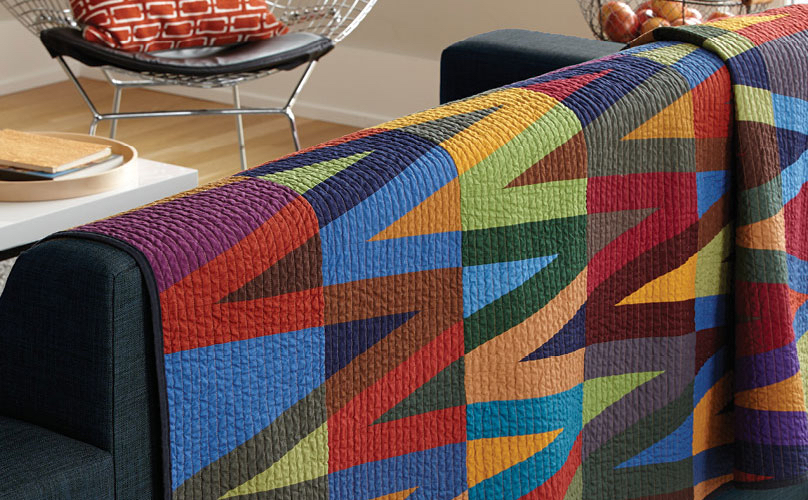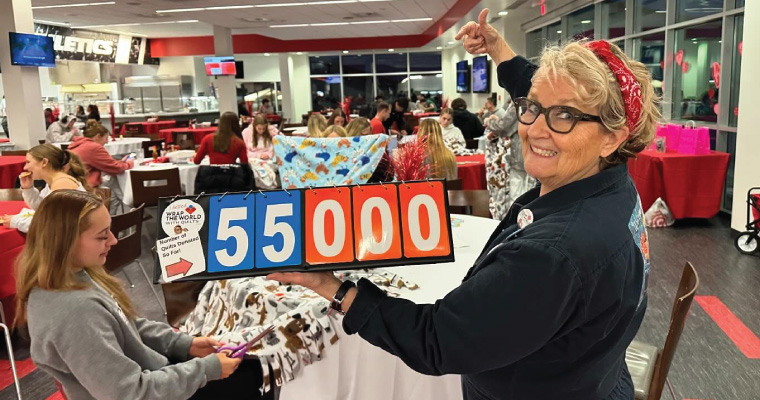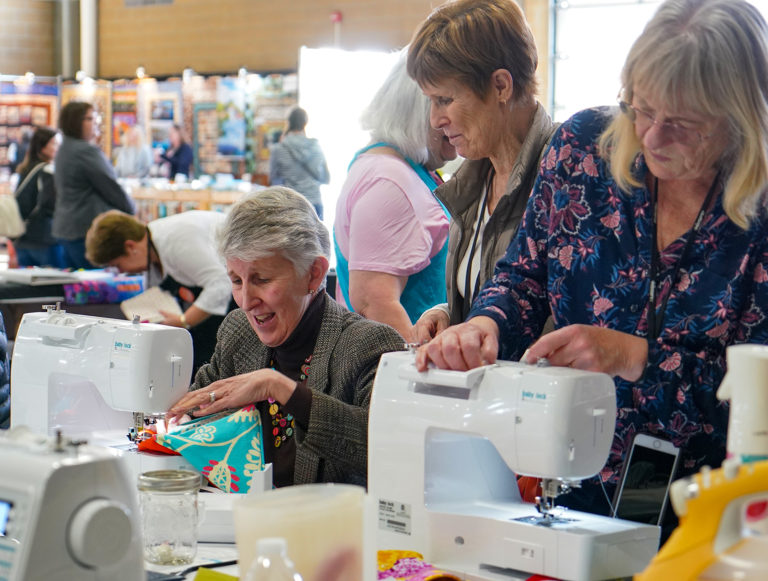Reposted with permission from Weeks Ringle, Modern Quilt Studio
 The past few years have brought tremendous changes to the world of quilting. Shops have closed by scores. Magazines and book publishers have shuttered or merged with other publishers. American Quilter Society has ceased publishing books all together. City Quilter in New York is closing. Tension has arisen at times between genres of quilters who perceive one genre being intolerant to another.
The past few years have brought tremendous changes to the world of quilting. Shops have closed by scores. Magazines and book publishers have shuttered or merged with other publishers. American Quilter Society has ceased publishing books all together. City Quilter in New York is closing. Tension has arisen at times between genres of quilters who perceive one genre being intolerant to another.
We began teaching modern quilting in 2001. The ages of our students ranged from twenty-somethings to retirees. Even as early as 2001 we noticed that spending patterns were clearly divided by age. Retirees had large stashes and both the time and money to make lots of quilts. Younger quilters had student debt, insecure jobs and looming college and retirement costs that prevented them from spending as much time or money on quilting. If we had a studio sale with fabric deeply discounted, the 50+ crowd would spend hundreds of dollars and the 30-somethings would buy 4 fat quarters. It was a pattern we saw repeatedly. So we never drank the Kool-Aid about modern quilters or young quilters saving our shrinking industry. They can’t afford to.
Hiring designers based on the number of Instagram followers instead of talent will not save our industry. Deciding which books to publish based on the age of the author will not save our industry. Belittling other genres of quilting will definitely not save our industry. If you REALLY want to save our industry, here are a few things you can do:
- Buy fabric and supplies from an owner whose name you know. Buying quilting fabric from Massdrop or Fabric.com might not seem like a big deal but for a mom-and-pop retailer every dollar truly matters. If you buy from Massdrop, the designer makes 15-20 cents per yard at best. If you buy directly from the designer, they make $4-6 per yard.
- Buy books from authors directly or through local quilt shops. If you buy a book from Amazon to save $4, the author makes $1. If you buy it from the author, the author makes typically half of the cost of the book, usually $10-15. If you buy it from a local quilt shop, the shop owner makes the profit but at least it stays in the industry and they stay in business and buy more books. It’s an enormous difference.
- Support ALL types of quilting. If you’re a modern quilter, go to an exhibit of applique quilts at a local guild. Do a shop hop of shops you haven’t been to. Take classes that are outside of your comfort zone. All of this money filters down to support guilds, teachers, shops and designers.
- Teach someone to sew or quilt. Help a teenager make a quilt for college or for graduation. Show a boy how to make a messenger bag or a pillow for his room.
- Understand the laws of supply and demand. With fewer shops in business and fewer quilters, the cost of fabric has and will increase. No one is taking advantage of you or ripping you off. It’s just the economics of each yard costing more because fewer yards are being produced. Ditto for the cost of magazines, especially with magazines like ours that has no ads.
- Don’t expect everything for free. Unless you want quilting to go the way of tatting, with very few people able to make a living teaching or designing, don’t photocopy patterns for your friends and don’t limit what you can learn to YouTube. I understand that each of us only has so much money and it’s tempting to want to give away your favorite patterns with your guild friends, but if you don’t support shops, publishers, designers and the like, those people will have to find other ways to make a living. The closed shops, the shuttered publishers and those who have left the industry for greener pastures or as a result of closures are proof that it has become harder than it was 20 years ago to make a living in the quilting industry.
Most importantly, can we just band together to support all quilters? And when I say support, I mean financially as well as sharing with others the work you find inspiring be it at a guild meeting or through social media. Can we decide that each quilt is made by someone who loves quilting as much as you do? If you don’t like the way quilt competitions are structured, suggest a new category. If you want more books on a certain topic, email the publisher. If you want more magazine coverage of a certain trend, let the editors know. If you want a certain fabric your local shop doesn’t carry, ask if they would be willing to order it. We are fortunate right now to have more work than we can manage. However, watching businesses related to quilting close affects all of us. Please share in the comments section anything you can think of to support the quilting world.




Your comments in this article are spot on. Especially what you said about younger modern quilters not having the money to support, and “save” our industry. They will some day, but I think the massive movement on the part of fabric companies, publishers, and even shop owners to promoting modern quilting at the expense of traditional quilting is a huge mistake.
Also, I feel that any modern quilting guild should not put down narrowly defined restrictions on what constitutes a modern quilt, especially for show entries. I have lots of friends who are modern quilters and will not join or support their local modern quilt guild because they have been told their work falls outside the “guidelines” of modern quilting. That is pompous, arrogant, and unfriendly. They should be encouraging, and open to all who want to participate, regardless of their interpretation of modern quilt making. The worst in this regard is the National Modern Quilt Guild.
such an insightful and worthwhile article.I am of the older generation quilting most of my 72 years of life and in Austin we have the traditional quilt guild and a modern quilt guild. I do my best to support both and am happy to say that several members of the modern group have joined the traditional group. Making each feel welcome is part of the growth and encouraging all techniques is high on my personal agenda. thanks for the article…I left money (haha) this weekend at three local quilt stores!!